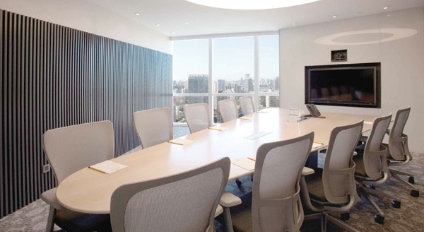A new study forecasts that video conferencing will become the number one communications tool by 2016.
We recently came across an article by Tim Sandle for Digital Journal that we have reprinted below. How are you adjusting to the latest video methods, such as 3-D? Are you keeping pace with your clients’ needs? Or are you still frozen in old school methods?
We’ve left a few of the links in the article, as they will take you to more sights concerning video conferencing trends.
Our main take away from the article is that video, like other media, is getting more interactive, more visually appealing and, in short, more “real”. Are you ready?
_____________________________________________________________________
Business set to prefer video conferencing by 2016
Video conferencing is expected to be the preferred business communications tool in 2016. This is according to new survey on global video conferencing trends.
Video conferencing is the means of using computers to provide a video-link between two or more people. Instead of just talking to someone by telephone, people are able to see each other as well. Video conferencing also allows graphics to be uploaded, along with maps and videos. Multipoint videoconferencing allows three or more participants to sit in a virtual conference room and communicate as if they were sitting right next to each other.
According to the BBC, the advantages of video conferencing are:
- Meetings can take place without leaving the office.
- Travel costs and the time taken to travel can be reduced significantly.
- Meetings can be called instantly worldwide with little notice.
- Delegates can still attend meetings even if they are physically unable to.
To this, University College London adds:
- Video conferencing removes distance barriers.
- Video conferencing can help improve productivity.
- The approach allows for multi-point Meetings across time zones and international boundaries.
There are some potential disadvantages as well. These include:
- Meetings may not be as productive as a discussion around a table.
- Confidential documents may need to be viewed and signed in person.
- There will always be times when people need to be able to meet face to face.
Nevertheless, the advantages seem to outweigh any potential drawbacks. Furthermore, the trends within the business community are that video conferencing is growing and, according to one survey, it is set to become the preferred medium for communication by 2016, coming ahead of face-to-face meetings and recorded presentations. The expansion in video conferencing has been facilitated by improvements to technology and lowering of costs. Such technological changes even include the possibility of video conferencing being broadcast in 3-D.
The survey conducted by Redshift Research and reported by TMC Net, titled “Global View: Business Video Conferencing Usage and Trends” has found that 96 percent of business decision makers surveyed are of the opinion that video conferencing is an essential tool helping improve team collaboration and closing the physical and cultural gap between colleagues doing business across distances. It is for these reasons that many businesses have stated that this type of communication will be favored into 2016 and beyond.
As of 2014, the survey respondents ranked video conferencing third (47 percent) after e-mail (89 percent) and voice/conference calls (64 percent). However, by 2016 the pattern changes. Here the same business leaders expect video to be their most preferred collaboration tool in three years (52 percent), followed by e-mail (51 percent) and voice/conference calls (37 percent).


 Dr. Gleb Tsipursky – The Office Whisperer
Dr. Gleb Tsipursky – The Office Whisperer Nirit Cohen – WorkFutures
Nirit Cohen – WorkFutures Angela Howard – Culture Expert
Angela Howard – Culture Expert Drew Jones – Design & Innovation
Drew Jones – Design & Innovation Jonathan Price – CRE & Flex Expert
Jonathan Price – CRE & Flex Expert











